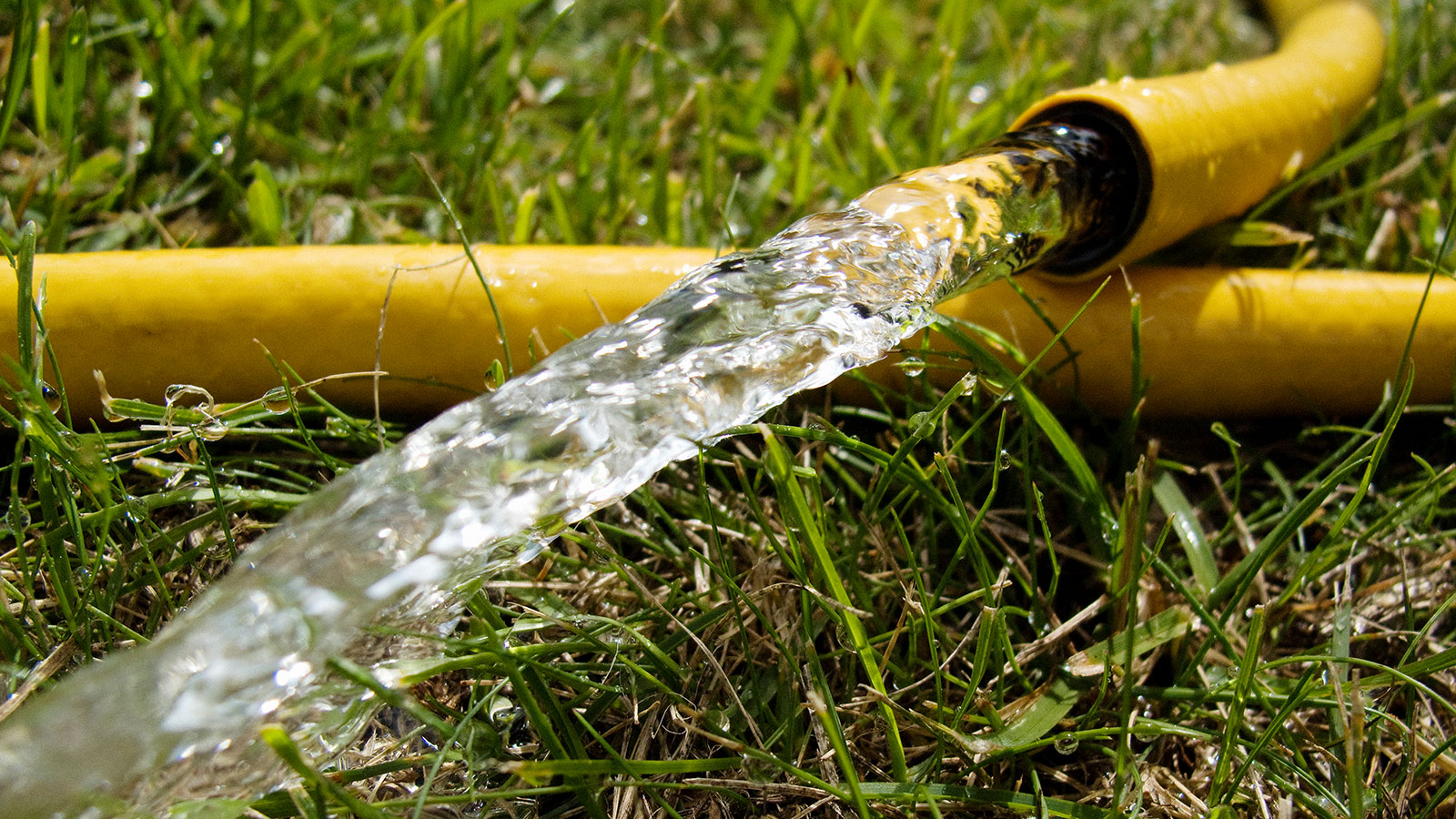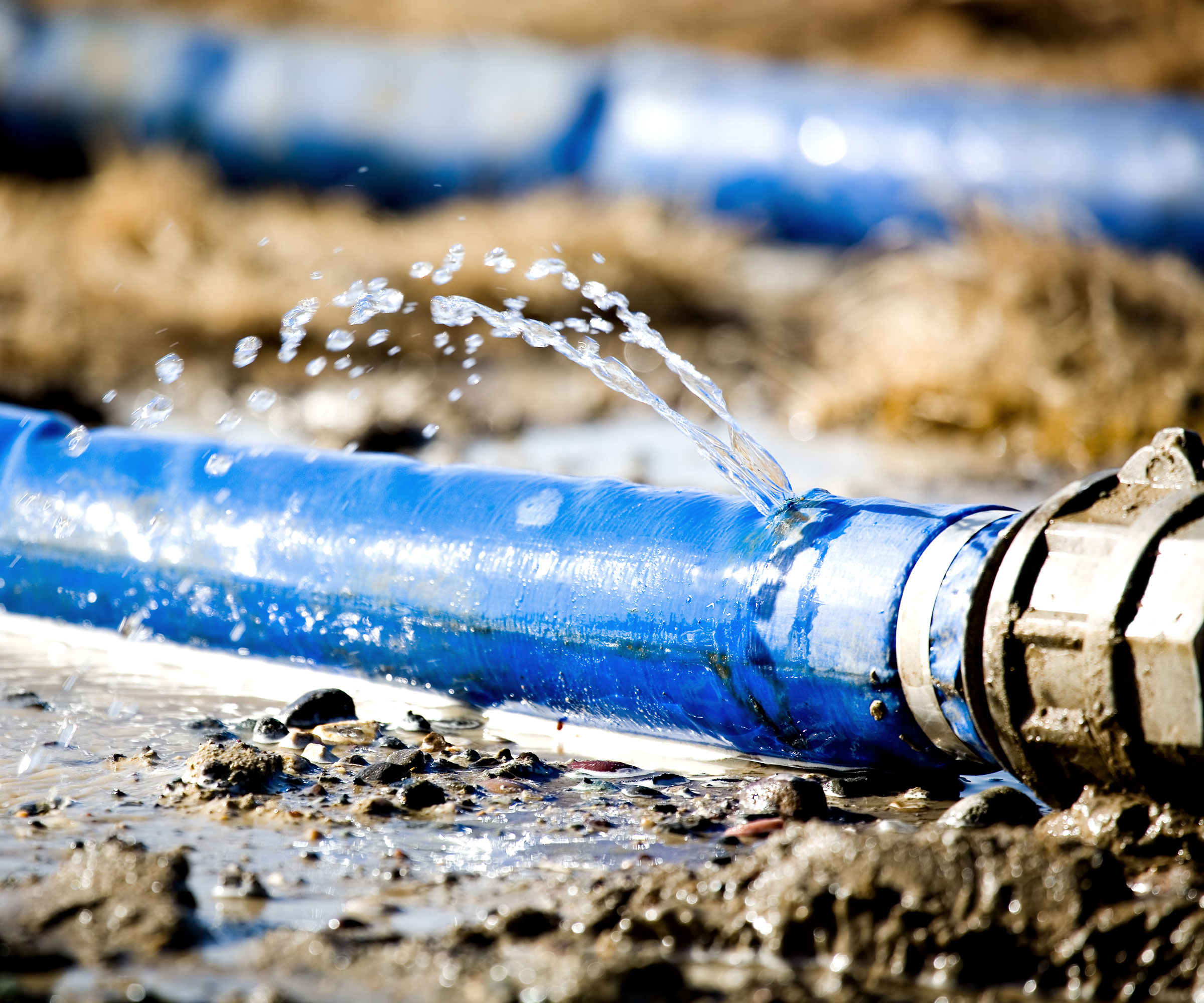How to fix a garden hose – easy ways to put a stop to leaks
Discover the repairs that will make a leaky garden hose good as new


Garden hose leaking water rather than spraying it all where it’s directed including on you? There’s no need to head straight to the store or go online to replace it. A leaky hose can be fixed instead of disposed of, providing more years of service and keeping it out of landfill for longer.
Punctures, tears and leaky joints all have potential remedies, and all it takes is a little knowhow and some inexpensive items to deal with these problems. Result? You’ll be back to watering plants or cleaning the patio in double-quick time with water going where it should at full pressure instead of wasted. Just take care to maintain your garden hose going forward.
We’ve put together an expert guide to fixing your garden hose issues.

Reasons why a garden hose needs fixing
Tough as they are, garden hoses can get damaged, developing punctures and tears. They can also leak at joints, making watering your plants in containers or flower beds, or cleaning paths and patios hard work. But the good news is that they are often mendable. ‘Most high-quality water hoses can be fixed if they have a hole or tear,’ explains Ismael Partida, master plumber at Shafer Services Plus. Bear in mind that this isn’t the rule, however. ‘Low-quality hoses that kink up will be a constant battle,’ he says.
Fix a garden hose according to type. ‘How you repair your hose depends on what type of material your hose is made from,’ Ismael advises. ‘Local hardware stores sell hose repair kits for rubber and vinyl hoses. These usually entail removing damaged sections and attaching a repair connector. Expandable hoses usually come with their own repair kits and patching materials.’
Note that for good water flow, repairing or – if that isn’t possible – replacing is essential. ‘If it’s time to invest in a new hose, choose one with good-quality rubber – like Continental or Goodyear,’ recommends Ismael. ‘These stand the test of time and various elements.’
This Continental Contitech rubber hose from Amazon is 50ft in length and is reinforced for high-burst strength.
How to fix a garden hose
How you fix a garden hose depends on what the problem causing the leak is. Your hose could have a small puncture, or a larger tear or the issue could be a leaky hose joint instead. These are the three methods you can use to fix the problem.
1. Make a short-term fix
Need to sort out a garden hose problem in a hurry? ‘If you need a temporary fix, you can use hose clamps, zip ties, duct tape, rubber and silicone patching, or epoxy putty,’ says Ismael. ‘Just remember that these are not ideal or long term solutions.’
This heavy duty silicone tape from Amazon is marine grade and suitable for repairing hoses, as well as cables and water pipes.
2. Use a hose repair kit
For a small puncture a hose repair kit can come to your aid. ‘It’s amazing what a hose repair kit can do,’ says Ismael.
‘You’ll simply cut out and remove any damaged sections. You’ll want to make clean cuts. Then attach the hose repair connector from the repair kit. You’ll insert it into one end of the hose and make sure it’s secure. Hose clamps and fasteners are ideal and can be tightened to make sure everything is watertight.'
3. Fix a leaky hose joint
Rather than from the hose itself, the leak might come from a joint. ‘There are a few ways to approach this,’ explains Ismael. ‘First, try tightening the connection. This is the easiest and most cost-effective thing to rule out. Just be careful not to overtighten it as this can cause more damage.’
Tightening the connection hasn’t solved the problem? ‘Sometimes, joints have a washer that may be damaged,’ Ismael says. ‘These can be easily replaced. If that doesn’t do the trick, you could cut off the attachment and start fresh.’
If you prefer to clean patio pavers without a pressure washer or rely on your garden hose to make light work of watering your flower beds, making sure it's free of leaks is essential to getting the job done fast.
If you've fixed any leaks and are still experiencing problems, make sure you check for low water pressure in your outdoor faucet as there could be additional problems that are causing a less-than-perfect flow of water.
Sign up to the Homes & Gardens newsletter
Design expertise in your inbox – from inspiring decorating ideas and beautiful celebrity homes to practical gardening advice and shopping round-ups.

Sarah is a freelance journalist and editor. Previously executive editor of Ideal Home, she’s specialized in interiors, property and gardens for over 20 years, and covers interior design, house design, gardens, and cleaning and organizing a home for Homes & Gardens. She’s written for websites, including Houzz, Channel 4’s flagship website, 4Homes, and Future’s T3; national newspapers, including The Guardian; and magazines including Future’s Country Homes & Interiors, Homebuilding & Renovating, Period Living, and Style at Home, as well as House Beautiful, Good Homes, Grand Designs, Homes & Antiques, LandLove and The English Home among others. It’s no big surprise that she likes to put what she writes about into practice, and is a serial house renovator.
-
 Nectar vs Layla – which mattress brand is best on test?
Nectar vs Layla – which mattress brand is best on test?I've set the Nectar Premier Hybrid Mattress and the Layla Hybrid Mattress head to head to help you work out which mattress meets your needs
By Emilia Hitching Published
-
 Barack and Michelle Obama's neutral accent chair is the perfect living room focal point – you can recreate their serene style in any-sized home
Barack and Michelle Obama's neutral accent chair is the perfect living room focal point – you can recreate their serene style in any-sized homeThis designer-approved essential fits into every modern living room – it's beautiful enough to stand alone, while pairing well with your favorite cushion
By Megan Slack Published